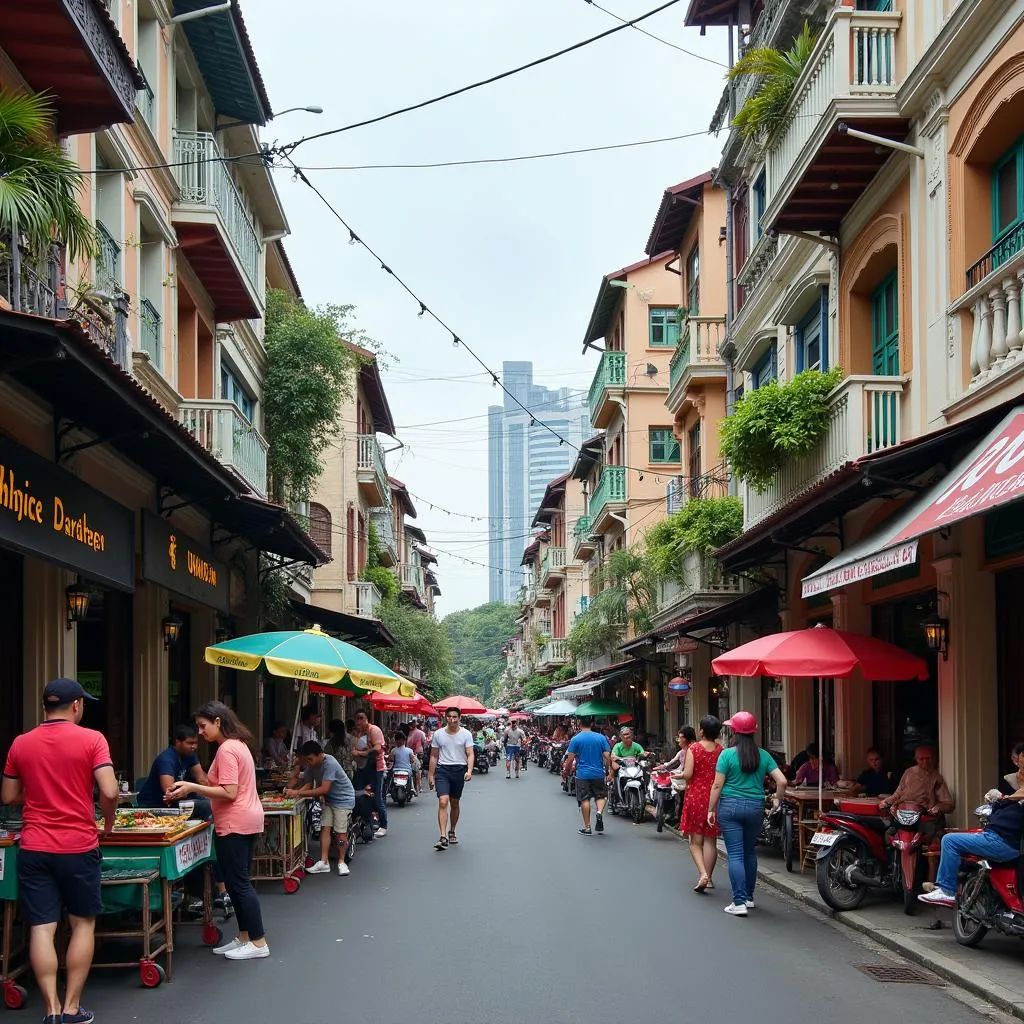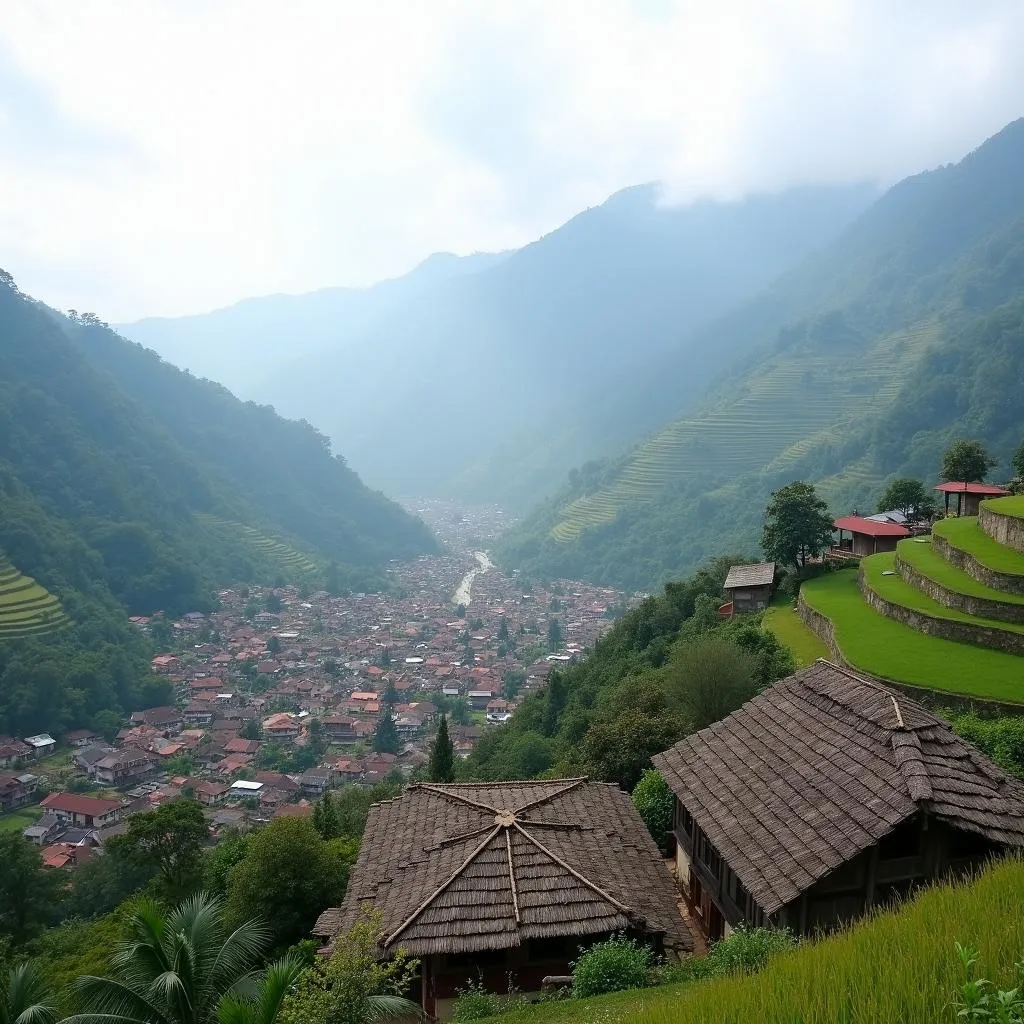Cultural diversity is a fascinating topic that often appears in IELTS Speaking tests. Being able to discuss a place known for its cultural diversity can showcase your language skills and cultural awareness. Let’s explore how to excel in this topic for your IELTS Speaking exam.
Describe a natural wonder in your country can be another interesting topic to practice for your IELTS Speaking test. However, let’s focus on describing a place known for its cultural diversity.
Part 1: Introduction and Interview
In this section, the examiner may ask you some general questions about cultural diversity. Here’s an example question with a suggested answer:
Examiner: Do you think cultural diversity is important in a society?
Candidate: Absolutely. I believe cultural diversity is crucial for a thriving society. It brings a wealth of perspectives and enriches our understanding of the world. When people from different backgrounds come together, it fosters innovation and creativity in various fields, from art to business. Moreover, it promotes tolerance and broadens our horizons, making us more open-minded and adaptable in our increasingly globalized world.
Part 2: Long Turn
Here’s a sample cue card related to the topic:
Describe a place in your country that is known for its cultural diversity.
You should say:
- Where this place is
- What makes it culturally diverse
- How you know about this place
- And explain why you think this place is important for your country
Sample Answer (Band 8-9)
I’d like to talk about Ho Chi Minh City, the economic hub of Vietnam and a place renowned for its cultural diversity. Located in the south of the country, this bustling metropolis is a melting pot of various cultures and ethnicities.
What makes Ho Chi Minh City so culturally diverse is its rich history and strategic location. Over the centuries, it has attracted people from all corners of Vietnam as well as immigrants from neighboring countries like China, Cambodia, and India. This influx of different cultures has created a unique tapestry of traditions, cuisines, and ways of life that coexist harmoniously.
I’ve personally experienced the city’s diversity through numerous visits and by interacting with locals from different backgrounds. The city’s vibrant streets are lined with a mix of architectural styles, from French colonial buildings to Chinese pagodas, reflecting its multicultural heritage. Moreover, the diverse culinary scene, featuring everything from street food to haute cuisine, is a testament to the city’s cultural fusion.
I believe Ho Chi Minh City’s cultural diversity is of paramount importance to Vietnam. It serves as a microcosm of globalization, demonstrating how different cultures can thrive together and contribute to a nation’s progress. This diversity fosters innovation, attracts international investment, and promotes cultural exchange, ultimately positioning Vietnam as an open and dynamic country on the world stage.
 Ho Chi Minh City's cultural diversity
Ho Chi Minh City's cultural diversity
Sample Answer (Band 6-7)
I want to talk about Ho Chi Minh City, which is a big city in the south of Vietnam. It’s known for having many different cultures.
The city is diverse because many people from different parts of Vietnam and other countries have come to live there. You can see Chinese, Vietnamese, and even some Western influences in the city.
I know about this place because I’ve visited it a few times and read about it online. When I was there, I saw many different types of buildings and tried various kinds of food from different cultures.
I think Ho Chi Minh City is important for Vietnam because it shows how people from different backgrounds can live together. It also helps Vietnam connect with other countries and attracts tourists and businesses.
Follow-up Questions
Examiner: How does cultural diversity impact the local economy?
Candidate (Band 8-9): Cultural diversity has a profound impact on the local economy of Ho Chi Minh City. Firstly, it acts as a magnet for tourism, attracting visitors who are eager to experience the city’s unique blend of cultures. This influx of tourists significantly boosts the hospitality and service sectors. Secondly, the diverse population brings a wide range of skills and expertise, which fosters innovation and entrepreneurship. This diversity creates a dynamic business environment that is attractive to international companies, leading to increased foreign investment. Moreover, the variety of cultural influences has given rise to a thriving creative industry, encompassing areas such as fashion, design, and cuisine, which further contributes to the city’s economic growth.
Candidate (Band 6-7): Cultural diversity is good for Ho Chi Minh City’s economy in several ways. It brings more tourists who want to see the different cultures, which helps businesses like hotels and restaurants. Also, people from different backgrounds bring different skills, which can help create new businesses. The mix of cultures also makes the city interesting for international companies, so they might want to invest there.
Part 3: Two-way Discussion
Examiner: How can governments promote cultural diversity in cities?
Candidate (Band 8-9): Governments can play a crucial role in promoting cultural diversity through various strategic initiatives. Firstly, they can implement inclusive policies that ensure equal rights and opportunities for all cultural groups. This might include anti-discrimination laws and affirmative action programs in education and employment. Secondly, governments can invest in cultural infrastructure, such as community centers and museums, which showcase and celebrate different cultures. They can also support multicultural festivals and events that encourage cross-cultural interaction and understanding. Additionally, incorporating diverse cultural perspectives into the education system can help foster appreciation for diversity from a young age. Lastly, governments can collaborate with local community leaders and NGOs to develop targeted programs that address the specific needs of different cultural groups, thereby creating a more inclusive and harmonious society.
Describe a time when you experienced a festival in another country can provide insights into how different cultures celebrate diversity, which is relevant to our discussion on promoting cultural diversity.
Candidate (Band 6-7): Governments can do several things to promote cultural diversity in cities. They can make laws that protect people from discrimination and give everyone equal chances. They can also organize festivals and events that show different cultures. Building museums and community centers for different groups is another good idea. Schools can teach about different cultures too. The government can also work with community leaders to understand what different groups need.
 Government initiatives promoting cultural diversity
Government initiatives promoting cultural diversity
Key Vocabulary and Phrases
To achieve a high score in your IELTS Speaking test, it’s crucial to use a range of sophisticated vocabulary and phrases. Here are some key terms related to cultural diversity:
-
Melting pot /ˈmeltɪŋ pɒt/ (noun): A place where different peoples, styles, theories, etc. are mixed together.
Example: “New York City is often described as a melting pot of cultures.” -
Cosmopolitan /ˌkɒzməˈpɒlɪtən/ (adjective): Including people from many different countries.
Example: “London is known for its cosmopolitan atmosphere.” -
Cultural fusion /ˈkʌltʃərəl ˈfjuːʒən/ (noun): The merging of different cultural elements.
Example: “The cuisine in Singapore is a perfect example of cultural fusion.” -
Diversity /daɪˈvɜːsəti/ (noun): The state of being diverse; variety.
Example: “The diversity of languages spoken in India is remarkable.” -
Multicultural /ˌmʌltiˈkʌltʃərəl/ (adjective): Relating to or containing several cultural or ethnic groups.
Example: “Canada prides itself on being a multicultural society.” -
Cultural heritage /ˈkʌltʃərəl ˈherɪtɪdʒ/ (noun): The legacy of physical artifacts and intangible attributes of a group or society.
Example: “Preserving cultural heritage is important for maintaining a sense of identity.” -
Ethnic enclave /ˈeθnɪk ˈenkleɪv/ (noun): A physical area with high ethnic concentration.
Example: “Chinatown in San Francisco is a well-known ethnic enclave.” -
Cross-cultural /krɒs ˈkʌltʃərəl/ (adjective): Dealing with or comparing two or more different cultures.
Example: “Cross-cultural communication skills are essential in today’s global business environment.”
Using these terms accurately in your responses can significantly enhance the quality of your answers and demonstrate a high level of English proficiency.
Describe a famous river in your country can be an interesting way to discuss how natural features influence cultural diversity in different regions.
Examiner’s Advice
To excel in the IELTS Speaking test when discussing cultural diversity:
-
Practice regularly: Familiarize yourself with the topic by reading about culturally diverse places and discussing them with others.
-
Develop your vocabulary: Learn and use sophisticated terms related to cultural diversity, as mentioned above.
-
Use personal experiences: Incorporate your own experiences or observations to make your answers more authentic and engaging.
-
Structure your answers: Organize your thoughts logically, especially in Part 2, to ensure a coherent and comprehensive response.
-
Be specific: Provide concrete examples and details to support your points, rather than making general statements.
-
Show enthusiasm: Demonstrate genuine interest in the topic through your tone and body language.
-
Expand on your answers: In Part 3, try to discuss broader implications and provide well-reasoned opinions.
-
Stay on topic: Ensure your answers are relevant to the questions asked, especially in Part 1 and Part 3.
-
Use a range of grammatical structures: Incorporate complex sentences and various tenses to showcase your language skills.
-
Be prepared for follow-up questions: Anticipate potential questions related to your answers and be ready to elaborate.
Remember, the key to success in the IELTS Speaking test is not just about knowing the topic, but also about effectively communicating your thoughts in fluent, accurate English.
Describe a place in your country that is famous for adventure sports can be an interesting way to discuss how cultural diversity influences recreational activities in different regions.
 IELTS Speaking test preparation
IELTS Speaking test preparation
By following these tips and incorporating the provided vocabulary and sample answers, you’ll be well-prepared to discuss cultural diversity in your IELTS Speaking test. Remember to practice regularly and stay informed about culturally diverse places to enhance your performance.


